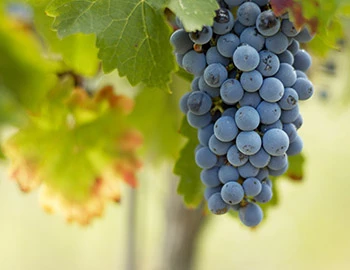
Château Lynch-Bages 2020
AC Pauillac 5ème Cru classé, 1500 ml

| Grape variety: | Cabernet Sauvignon, Merlot, Cabernet Franc, Petit Verdot |
| Producer: | Château Lynch Bages |
| Origin: | France / Bordeaux / Pauillac |
| Other bottle sizes: |
Description
Citing Robert Parker The Wine Advocate "The vintage that inaugurated the estate's new state-of-the-art winery, the 2020 Lynch-Bages has turned out very nicely, offering up aromas of crème de cassis and blackberries mingled with notions of pencil shavings, spices and classy new oak. Medium to full-bodied, deep and layered, with good concentration, ripe, powdery tannins and a seamless, integrated profile for such a young Lynch-Bages, it shows considerable promise. The blend of 60% Cabernet Sauvignon, 31% Merlot, 4% Cabernet Franc and 5% Petit Verdot incorporates more Merlot than usual, reflecting relative yields in the vintage more than any stylistic shift."
Attributes
| Origin: | France / Bordeaux / Pauillac |
| Grape variety: | Cabernet Sauvignon, Merlot, Cabernet Franc, Petit Verdot |
| Ripening potential: | 6 to 25 years |
| Drinking temperature: | 16 to 18 °C |
| Volume: | 13.0 % |
| Note: | Contains sulphites |
Petit Verdot
Bordeaux’s secret weapon
It is commonly said that the Petit Verdot originated in Bordeaux. But genetically, it is closer to a group of vines from near the Pyrenees, which are most likely descended from wild clematis. In French, these wild plants are called “lambrusques”, and the Petit Verdot is also known under the synonym Lumbrusquet. It is a high quality grape: very dark and spicy with notes of cassis and graphite, plenty of robust tannins and strong acidity. Most major Bordeaux contain a small proportion of Petit Verdot. Appropriately, it is valued wherever wines are produced according to the Bordeaux recipe. For example, in Italian Maremma or in California, where it covers the largest area worldwide. It is almost never vinified purely by itself. Incidentally, its name, derived from “vert”, meaning green, alludes to its Achilles heel: in cool weather it tends to form small, seedless green grapes.

Merlot
Everybody’s darling
Merlot is the most charming member of the Bordeaux family. It shines with rich colour, fragrant fullness, velvety tannins and sweet, plummy fruit. It even makes itself easy for the vintner, as it matures without issue in cool years as well. This is in contrast to the stricter Cabernet Sauvignon, which it complements as a blending partner. Its good qualities have made the Merlot famous worldwide. At over 100,000 hectares, it is the most-planted grape in France. It also covers large areas in California, Italy, Australia and recently in Eastern Europe. The only catch is that pure Merlot varieties rarely turn out well. Its charm is often associated with a lack of substance. Only the best specimens improve with maturity. They then develop complex notes of leather and truffles. This succeeds in the top wines from the Bordeaux appellation of Pomerol and those from Ticino, among others.

Pauillac
Pauillac: Aristocratic crus
No appellation embodies the noble Bordeaux virtues on such a fine, almost majestic level as Pauillac, the peninsula resting in the Médoc. With Lafite-Rothschild, Latour and Mouton-Rothschild, it is also home to the majority of the five premier crus. The grandeur of Pauillac crus is quite clearly based on the Cabernet Sauvignon variety, which, with a share of over 70 percent, certainly dominates in assemblages, and also lends the wines excellent aging potential.

Bordeaux
Bordeaux: high prestige, high quality
With a total area of around 115,000 hectares, Bordeaux may not be France’s largest wine-growing region, but it is certainly its most prestigious. The range of wines produced here today is enormous: ranging from red everyday wines with a great relationship between price and quality to exclusive, and accordingly expensive, premier crus. Elegant white wines and noble sweet specialties round out the spectrum.

France
France – Philosophy in a bottle
According to French philosophy, wine should be an expression of the soil and climate. They use the word “terroir” to describe this. Terroir makes every wine different, and many especially good. French wine is regarded worldwide as an expression of cultural perfection. The French believe that humans are responsible for the quality of the berries, the vine variety for their character, and nature for the quantity. This philosophy can be expressed succinctly as: “the truth is the vineyard, not the man.”


